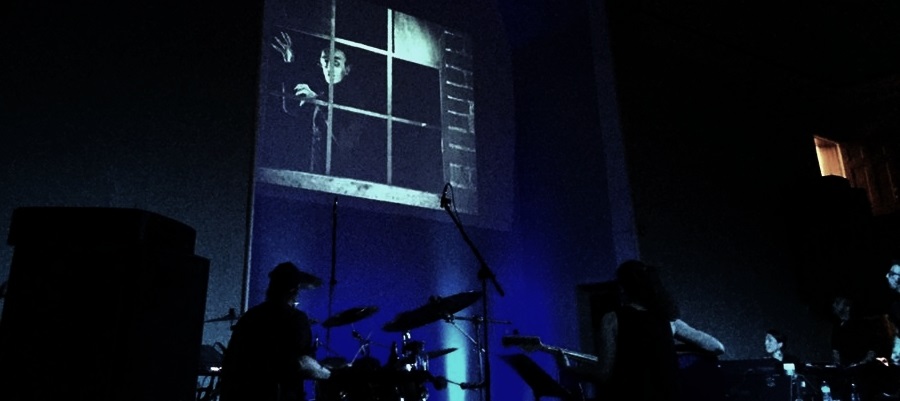On June 3, Center for the Arts of Homer kicked off the first installment of its Not So Silent film series. The ingredients: one silent film, one local band and one original score to play to the film. In this instance The Magnetic Pull, an electro instrumental band, accompanied Nosferatu. A fun fact: The silent German Dracula film was released in the United States to the day in 1929.
“The Not So Silent Film Series challenges local and regional bands to create and adapt original music to silent films,” said executive director Ty Marshal.
It’s a stimulating yet not an original idea. The concept has been done before in much larger cities such as New York. This show has opened a door to a potentially engaging niche.
The Magnetic Pull offered a textured, meditative soundtrack, a musical being that refused to stop breathing. The landscape of melodies featured valleys and rolling hills — crescendos stood as immense as mountains. The sampling and sound effects, stand-alone notes, riffs and whirring rumble of drumsticks following the edge of cymbals added to this environment.
Although there wasn’t a hint of pipe organ to authenticate a silent film experience, the chiming clocks represented by a clanging cymbal and electronically generated squeaks for rats proved to be appropriate sound effects.
“We’ve always envisioned the idea of performing a live score,” said Jake LaManna of The Magnetic Pull. “We’ve seen examples of live soundtracks. Most of the time it’s a band playing their music along with the movie. We wanted to marry the film to the music.”
The band members began rehearsing in February, and the first step they took was to watch Nosferatu without any sound. Ideas were written down and implemented during writing and rehearsals. The result and early June performance satisfied the band.
The mood was set. The natural accompaniment of slowly fading sunlight seen through the center’s stained glass windows proved to be accidental and well-timed. The theater gradually darkened, coinciding with the film’s sunrise.
“The theme of the project was the balance of light and dark,” LaManna said. The timing of the show was on purpose, and it was noticeable as an audience member.
The 400-seat church-turned-theater offers floor and balcony seating, and there isn’t a bad view in the house. It’s almost as if this performance is taking place in your very own living room.
To continue this series, bands have to accept this challenge, center director Ty Marshal said at the end of the evening.
“A series like this really has to be led by the musicians or bands interested in creating this type of event, so it is imperative that each musician or band has a say in what film they wish to re-score,” he said. Films such as Metropolis and The General have also been considered.
Musicians have to create an original and fluid soundtrack, taking the audience on a journey from opening to closing credits.



